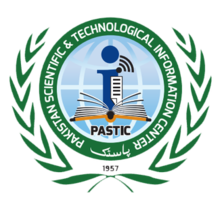Rett Syndrome without MECP2 Mutation in a Pakistani Girl
Rett Syndrome in Pakistani Girl
Abstract
Rett syndrome is a rare inherited neurodegenerative disease which mostly affects females but has a lethal impact on males. Rett syndrome is mostly caused by mutations of Methyl CpG binding protein-2 (MECP2) gene located on chromosome Xq28.
A 7-year girl from a consanguineous Pakistani family presented with history of abnormal social behavior, tonic colonic seizures, limb'sataxia, intellectual disability, growth retardation and speech abnormalities. Physical and neurological examinations established likely clinical features of Rett syndrome with abnormal electroencephalogram (EEG). Genetic testing of MECP2 gene did not identify any functional nucleotide variation indicating the involvement of another gene mutation in this patient.
A consanguineous case of Rett syndrome did not carry the mutation of MECP2 gene. Due to heterogeneity of the phenotype, it is proposed that there might be involvement of another locus for this disease. In future, targeted next generation sequence can be helpful to identify the causative mutation in this patient.
References
Ermel ÉL, Carneiro LC, Souza CF, Crippa AC, Sanseverino MT, Raskin S. Epileptic encephalopathy and atypical Rett syndrome with mutations in CDKL5: clinical and molecular characterization of two Brazilian patients. Arquivos de neuro-psiquiatria. São Paulo. 2013; 71: 414-5.
Olson HE, Tambunan D, LaCoursiere C, Goldenberg M, Pinsky R, Martin E, et al. Mutations in epilepsy and intellectual disability genes in patients with features of Rett syndrome. American Journal of Medical Genetics Part A. 2015; 167: 2017-25.
Percy AK, Neul JL, Glaze DG, Motil KJ, Skinner SA, Khwaja O, et al. Rett syndrome diagnostic criteria: lessons from the Natural History Study. Ann Neurol. 2010; 68: 951-5.
Tao J, Van Esch H, Hagedorn-Greiwe M, Hoffmann K, Moser B, Raynaud M, et al. Mutations in the X-linked cyclin- dependent kinase-like 5 (CDKL5/STK9) gene are associated with severe neurodevelopmental retardation. Am J Hum Genet. 2004; 75: 1149-54.
Wang J, Zhang Q, Chen Y, Yu S, Wu X, Bao X. Rett and Rett-like syndrome: Expanding the genetic spectrum to KIF1A and GRIN1 gene. Mol Genet Genomic Med. 2019; 11: e968.
Amir RE, Van den Veyver IB, Wan M, Tran CQ, Francke U, Zoghbi HY. Rett syndrome is caused by mutations in X-linked MECP2, encoding methyl-CpG-binding protein 2. Nature genetics. 1999; 23: 185.
Nasiri J, Salehi M, Hosseinzadeh M, Zamani M, Fattahpour S, Aryani O, et al. Genetic Analysis of MECP2 Gene in Iranian Patients with Rett Syndrome. Iran J Child Neurol. 2019; 13: 25-34.
Tarquinio DC, Hou W, Neul JL, Lane JB, Barnes KV, O'Leary HM, et al. Age of diagnosis in Rett syndrome: patterns of recognition among diagnosticians and risk factors for late diagnosis. Pediatric neurology. 2015; 52: 585-91.
Dolce A, Ben-Zeev B, Naidu S, Kossoff EH. Rett syndrome and epilepsy: an update for child neurologists. Pediatric neurology. 2013; 48: 337-45.
Cianfaglione R, Clarke A, Kerr M, Hastings RP, Oliver C, Felce D. A national survey of Rett syndrome: Age, clinical characteristics, current abilities, and health. American Journal of Medical Genetics Part A. 2015; 167: 1493-1500.
Williamson SL, Ellaway CJ, Peters GB, Pelka GJ, Tam PP, Christodoulou J. Deletion of protein tyrosine phosphatase, non-receptor type 4 (PTPN4) in twins with a Rett syndrome- like phenotype. European Journal of Human Genetics. 2015; 23: 1171.
Kaufmann WE, Johnston MV, Blue ME. MECP2 expression and function during brain development: implications for Rett syndrome's pathogenesis and clinical evolution. Brain and Development. 2005; 27: S77-S87.
Hussain A, Khan MA, Qazi SA, Rehman GN. The Rett syndrome: the first case report from Pakistan. Brain and Development. 1991; 13: 442-4.
Sheikh TI, Harripaul R, Ayub M, Vincent JB. MECP2 AT-Hook1 mutations in patients with intellectual disability and/or schizophrenia disrupt DNA binding and chromatin compaction in vitro. Human Mutation. 2018; 39: 717-28.
Khan AA, Kirmani S. Mild presentation of the congenital variant Rett syndrome in a Pakistani male: expanding the phenotype of the forkhead box protein G1 spectrum. Clinical Dysmorphology. 2019.














